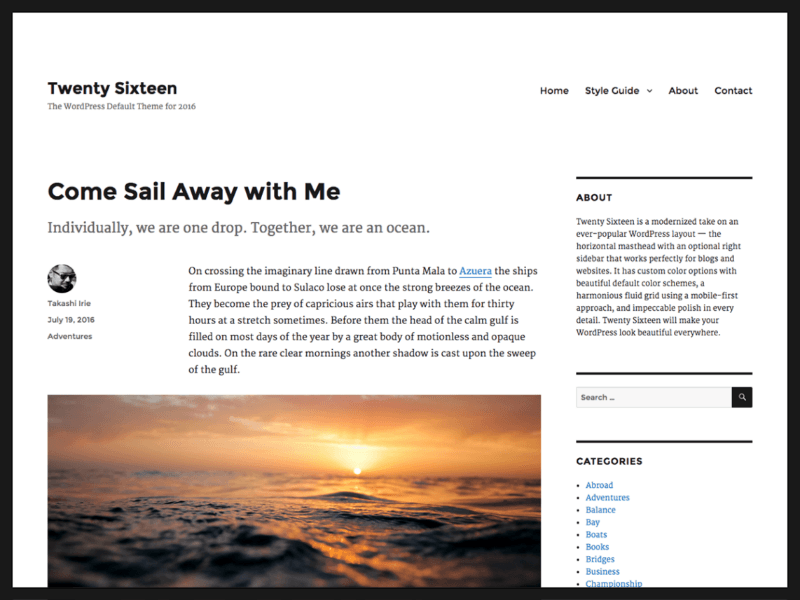I started my blog 13 years ago, in 2003. At the time, Movable Type was the most popular blogging platform; although a challenger, in the form of WordPress, had newly arrived on the blogging scene.
I made the choice to stay with Movable Type, performing regular, often very painful version updates through to Movable Type 3.2 in the summer of 2005.
My blog has stayed on that version of MT ever since – over 10 long years. Over time, the performance of my Movable Type installation has degraded, to the extent that publishing new posts now causes the whole installation to hang and generate a server error.
I had been thinking about migrating to WordPress for the last few years, but a combination of (a) being too busy and (b) the thought of cleaning up and fixing about 650 posts and thousands of images was too off-putting for me to take the plunge.
Since joining Lazada in 2015 and working more formally in product management and mobile development, I’ve been wanting to write about my experiences and learnings along the way.
So, I finally decided this was going to be the year I moved from 2005 to the present and joined the other 25% of the world who run their websites on WordPress.
I had a few goals regarding my new WordPress blog:
- No code-level maintenance by me – I just don’t have the time
- No theme customization except through the admin panel
- Extremely mobile friendly
- Keep search traffic rankings
- Clean up outgoing broken links
In order to reach the “no maintenance” goal I needed to use a managed WordPress hosting provider who could do all that for me. I investigated a few options, and after a short, unsuccessful stint with GoDaddy, I chose SiteGround for my managed WordPress hosting.

I was able to import my regular Smiley Cat blog posts without too much difficulty.
However, I wanted to rethink how I set up and managed my Elements of Design UI pattern galleries so I decided to add those entries individually.
There were only about 60 or so actual entries, but they included 2,000+ images which I needed to rename, caption, link to source, add metadata, etc.
This was a real manual slog. I’m sure there is a smarter way for me to have done this, but I didn’t want to spend the time researching it, and it gave me an opportunity to weed out some entries whose designs the years have been less kind to.
I don’t have ‘Elements of Design’ set up yet how I want. But, at least all the media is properly stored in WordPress so it should be pretty easy to change how the entries are displayed once I know how to use the system better.
As far as site design is concerned, I wanted to minimize the amount of time I spent fiddling with layouts and images. Once everything was working from a functional perspective, I would have plenty of time to try new themes and tweak the layout.
So, I deliberately went with the most vanilla theme available, WordPress 2016.

I will freely admit that migrating from the 2005 version of Movable Type to the 2016 version of WordPress is like warping into the future. So much functionality! Such a user-friendly admin panel! So many great plugins, and so easy to update everything! My head is still spinning.
One mistake I did make was not to set up WordPress to accept posts written using Textile formatting prior to importing my entries.
Consequently, all my formatting was converted into plain text and I had to go through each post manually updating the formatting.
This was actually a good opportunity to do some additional formatting and clean up, but there are still quite a few really old posts floating around with “h2.” instead of an H2 heading, and so on. I suppose I’ll get to these eventually.
Another manual task I created for myself was to redirect my old Movable Type URLs to my new SEO-friendly WordPress ones. I’ve been using the Redirection plugin for this task, which is good but doesn’t make the process any less laborious.
Fortunately, you can use regular expressions in the plugin to reduce the number of redirects you need to create.
I’ve redirected hundreds of URLs and still have a lot to go. It’s truly amazing the amount of bad links pointing to your website after a few years.
One important activity I have still to do is to set up my portfolio. I plan to use the portfolio content type, but have a lot to learn about how best to set it up.
To wrap up, I’m really happy that I’ve finally made the jump to WordPress; and, yes, I should have done it years ago. I will just need to make sure that I spend more time writing new content than fiddling around with my WordPress settings.
